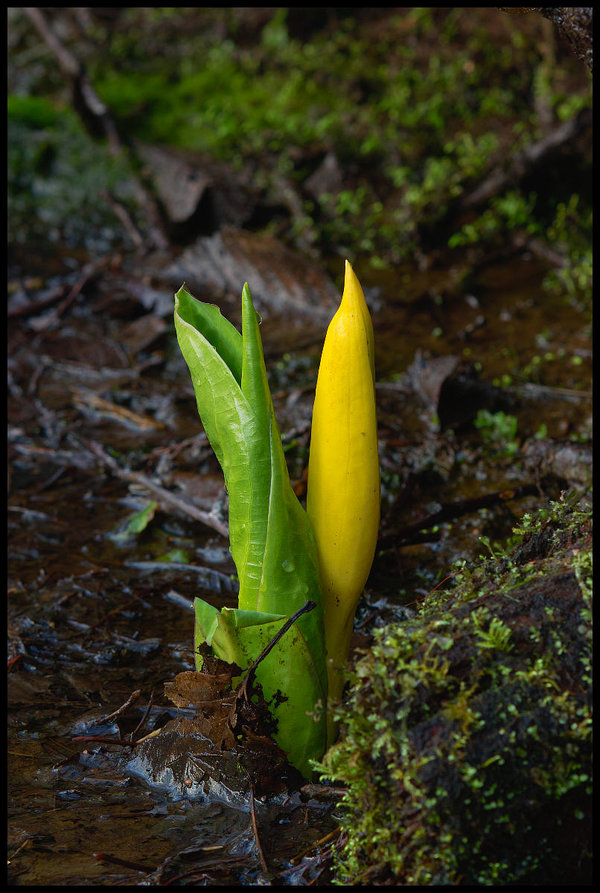laurence2
Well-Known Member
- Joined
- Jan 15, 2009
- Messages
- 129
Not exactly a macro, although I used the Pentax SMC 100/4 Macro lens with the SD-14.
This is a very early Skunk Cabbage (Lysichiton americanus) which is common in our wet woods and wetlands. This guy is about 5 inches tall, and the spathe and spadix are developing, along with the "rollout" of the leaves. These can sometimes grow into giants, with leaves as much as 4 feet long, and a total spread of 8-9 feet.
When I used to accompany my grandfather on plant-naming forays, we would warm our numb hands inside the spathe. The plant generates heat through chemical reactions, and actually melts the snow around the plant.
The Foveon sensor shows its true capability of being dimensional here, and the image will show best when you bring it up to maximum resolution. I am really excited about the ability to render true colors, and also love that I didn't have to do anything at all to this image, other than resize it. Now THAT'S the kind of workflow I like!
This is a very early Skunk Cabbage (Lysichiton americanus) which is common in our wet woods and wetlands. This guy is about 5 inches tall, and the spathe and spadix are developing, along with the "rollout" of the leaves. These can sometimes grow into giants, with leaves as much as 4 feet long, and a total spread of 8-9 feet.
When I used to accompany my grandfather on plant-naming forays, we would warm our numb hands inside the spathe. The plant generates heat through chemical reactions, and actually melts the snow around the plant.
The Foveon sensor shows its true capability of being dimensional here, and the image will show best when you bring it up to maximum resolution. I am really excited about the ability to render true colors, and also love that I didn't have to do anything at all to this image, other than resize it. Now THAT'S the kind of workflow I like!
